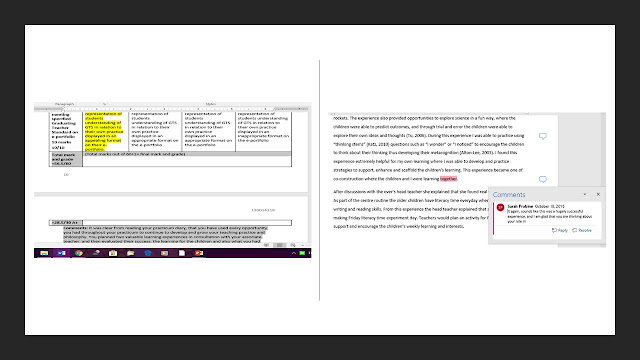Alton-Lee, A. (2003). Quality
teaching for diverse students in schooling: Best evidence synthesis.
Wellington, New Zealand: Ministry of Education.
Education Council. (2017). Our code our
standards. Code of professional responsibilty and standards for the teaching
profession: Ngaa tikanga matatika ngaa paerewa. Wellington: Education
Council New Zealand.
Education Council of Aotearoa New Zealand.
(2015). Graduating teacher standards. Retrieved from
educationcouncil.org.nz:
https://educationcouncil.org.nz/content/graduating-teacher-standards
Guerra, M., & Zuccoli, F. (2012).
Finished and unfinished objects: supporting children's creativity through
materials. Porcedia - Social and Behavioural Sciences, 51, 721-727.
MacNaughton, G., & Williams, G. (2009).
Techniques for teaching young children: Choices in theory and practice
(2 ed.). Frenchs Forrest, Australia: Pearson Prentice Hall.
Ministry of Education. (1996). Te
Whāriki: He whāriki matauranga mō ngā mokopuna o Aotearoa: Early childhood
curriculum. Wellington, New Zealand: Learning Media.
Ministry of Education. (2004). An
introduction to kei tua o te pae: He whakamoohiotanga ki kei tua o te pae.
Assessment for learning: Early childhood exemplars. Wellington, New
Zealand: Learning Media Limited.
Ministry of Education. (2017). Te
Whaariki: He whāriki mātauranga mō ngā mokopuna o Aotearoa Early childhood
curriculum. Wellington, New Zealand: Ministry of Education.
Ministry Of Education. (n.d). He reo
tupu, he reo ora. Retrieved from TKI: Te kete ipurangi:
http://hereoora.tki.org.nz/Teachers-notes/Teaching-te-reo-Maori-effectively
Pere, R. T. (1995). Te Wheke: A
Celebration of infinite wisdom (2nd ed.). Gisbourne, New Zealand: Ao Ako
Global Learning New Zealand Ltd.
Tyminski, C. (2006). Becoming a
professional. In Your early childhood practicum and student teaching
experience: Guidelines for success, 19-36.
Wenger, E. (2010). Communities of practice
and social learning systems: the career of a concept. In C. Blackmore (Ed.), Social
learning systems and communities of practice (pp. 179-198). London: Open
University.



























